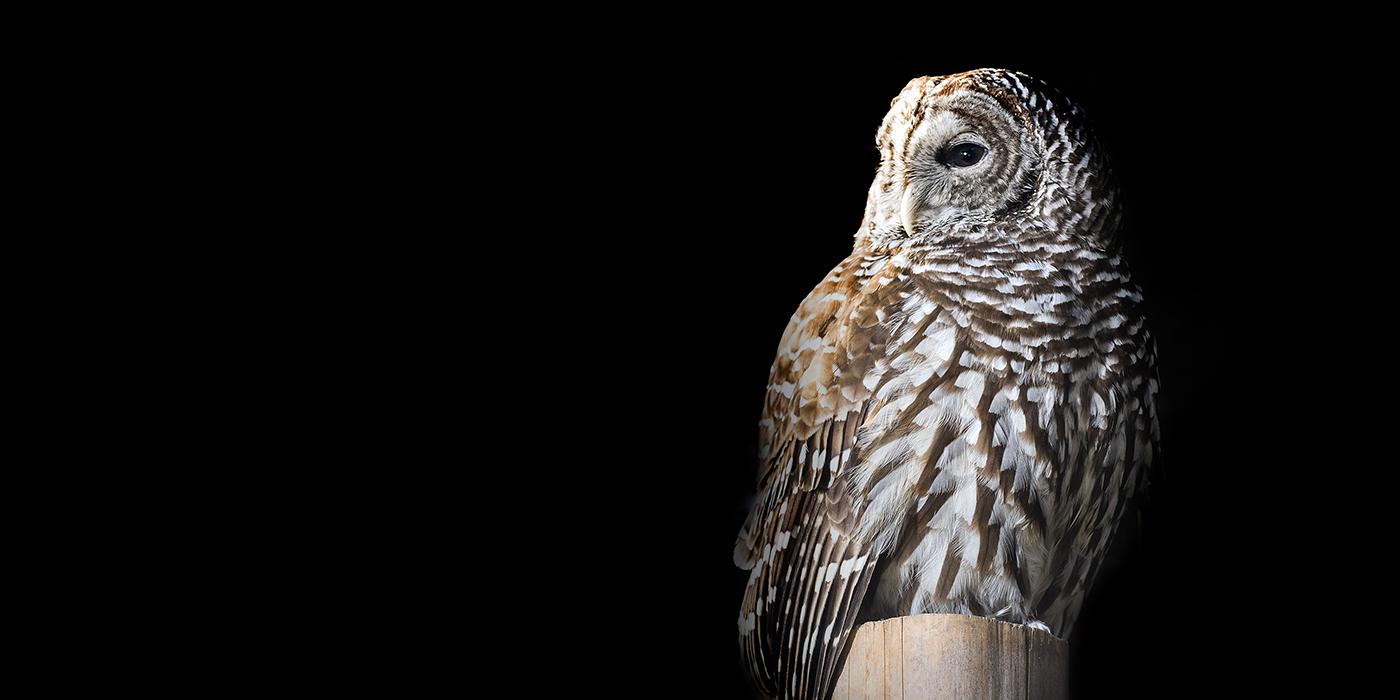Physical Description
Brownish-gray in color, barred owls have large round heads with a well-defined face. They do not have feather tufts, which are often mistaken for ears, as tufted owls do. They have heavily feathered legs with featherless feet. Like most owls, they have large eyes, allowing them to see well in their nocturnal hunting grounds. Unlike the yellow eyes of most owls, barred owls have brown eyes.
Size
Barred owls are large owls, standing up to 22 inches (56 centimeters) high, with females weighing up to 0.5 pounds (1 kilogram). Females are significantly larger than males, often weighing one-third more.
Native Habitat
Barred owls are among North America's most common owls. They are distributed throughout Canada and the United States, with a separate population in Mexico. They prefer large, unbroken tracts of forest, though they are not uncommon in smaller, heavily-treed forests.
Due to their need for nesting cavities, they prefer old-growth forest. They are currently expanding their range into the Pacific Northwest, and with this expansion have begun to hybridize with their smaller, critically endangered cousin, the spotted owl.
Communication
Barred owls are more vocal than most other northern owls and are often heard in the forest. Their characteristic call is supposed to sound like they are asking, "Who cooks for you? Who cooks for you all?"
Food/Eating Habits
Barred owls will eat just about anything they can catch and kill, including small mammals up to the size of rabbits, ground-dwelling birds, all manner of reptiles and amphibians, and invertebrates. They typically take prey on the ground, but have been observed chasing squirrels through tree limbs.
Sleep Habits
While barred owls are primarily nocturnal, active and hunting at night, they may occasionally hunt or call in the middle of the day.
Reproduction and Development
Courtship begins in late winter, with males and females searching for potential nest sites. Their egg laying begins as early as December in the southernmost part of their range, but typically occurs in early spring. Barred owls lay two to five white, oval eggs. They prefer to lay their eggs in a pre-existing tree cavity, though they have been known to use abandoned stick nests.
Females incubate the eggs for 28 to 32 days. Chicks fledge at 5-6 weeks old. Their mother feeds and cares for them for another two weeks after fledging, but then the young must fend for themselves.
Help this Species
Share the story of this animal with others. Simply raising awareness about this species can contribute to its overall protection.
Are you a student? Did you love what you learned about this animal? Make it the topic of your next school project, or start a conservation club at your school. You'll learn even more and share the importance of saving species with classmates and teachers, too.
Smithsonian's National Zoo and Conservation Biology Institute. (n.d.). Barred owl. Retrieved January 17, 2026, from https://nationalzoo.si.edu/animals/barred-owl
Animal News



